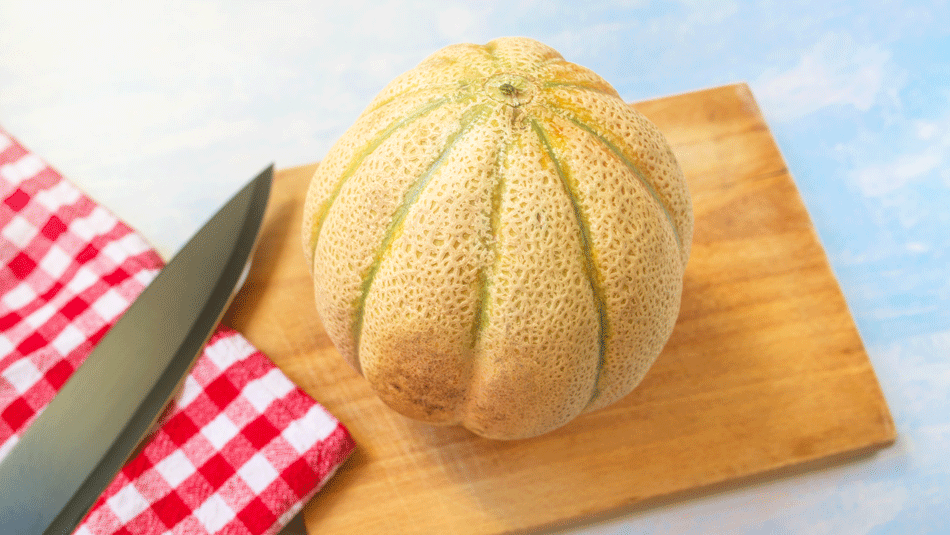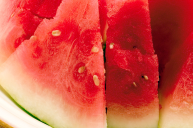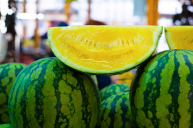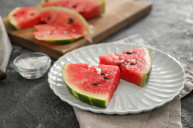Melon season is an exciting time, but watching those grocery store bins overflow with round fruit like honeydew, watermelon, and muskmelon can be overwhelming. They are chock full of health benefits and are so much more than the fillers in your fruit salad! Still, they're just so hard to pick. Because it's considered rude to cut into a melon right in the middle of the market, how do you know how to pick a good melon and know its ripeness?
With that in mind, we're focusing on how to pick a cantaloupe from the many when you're in the grocery store or farmer's market. It's easier than you might think if you remember these five steps to avoid an overripe melon.
How to Pick a Cantaloupe
1. Inspect It
Before you go picking any up, let's start with the color. A ripe cantaloupe will appear more gold than green on the outside, signaling it's ready.
The closer the skin color is to beige, the better. Beige-r, better: cantaloupe motto.
2. Smell It
Now that you've found one in a suitable color, bring the blossom end of your ripe melon to your nose. Opposite the stem end, which is where you will find the remnants of the stump, the blossom end is a good indicator of freshness.
If there is a sweet smell and slightly musky scent, that's the sign of a good cantaloupe.
If you smell something similar to alcohol or nail polish remover, the melon is fermented and on the verge of going very, very bad.
3. Poke It
While smelling the blossom end, opposite the stem area, poke around it. If it gives a little bit, you're one step closer to holding the perfect cantaloupe.
The surface area should have no majorly soft spots and very little bruising, while also remaining slightly firm. An unripe melon will be very firm with no give at all.
4. Touch It
Apart from poking around, you'll know you have a delicious fruit in your hands if you're holding a cantaloupe with a strong, raised netting on the rind.
The more defined netting, the better the cantaloupe tastes. Especially in a fruit salad. You're almost there!
5. Weigh It
The perfect cantaloupe will have some heft to it, and the heavier it is, the better it is. The best way to determine a good cantaloupe is to tap it.
If you hear a hollow sound, step away from the cantaloupe. It should sound firm and stable, not empty inside. Like your best friends.




